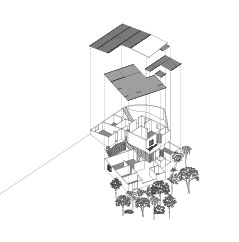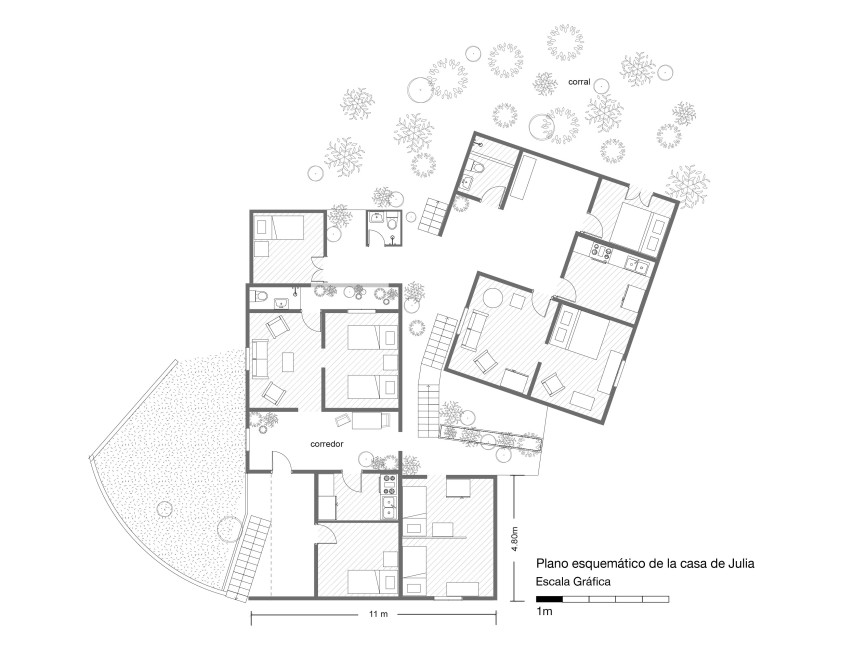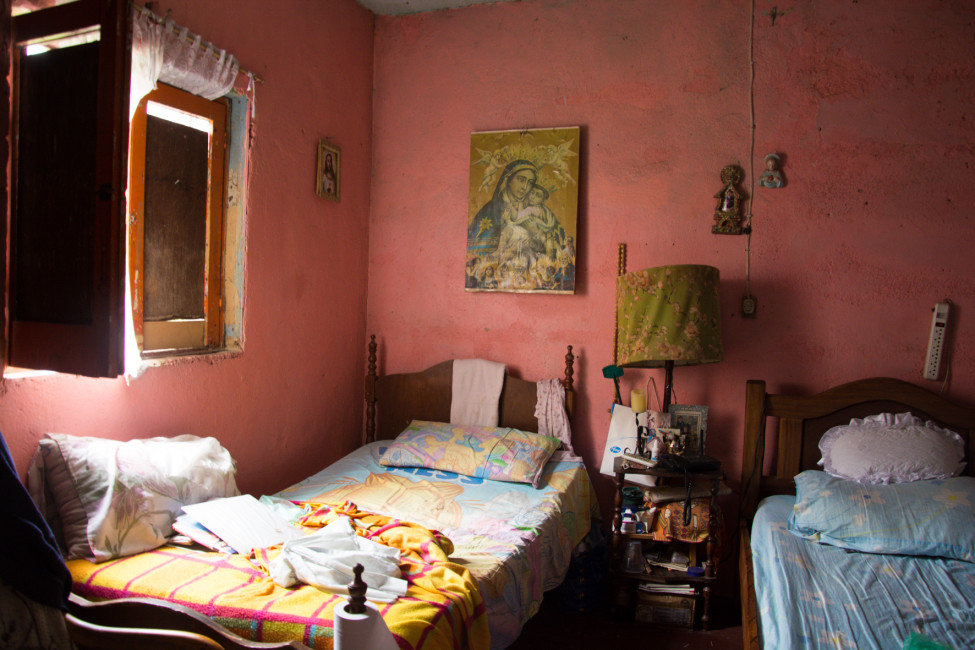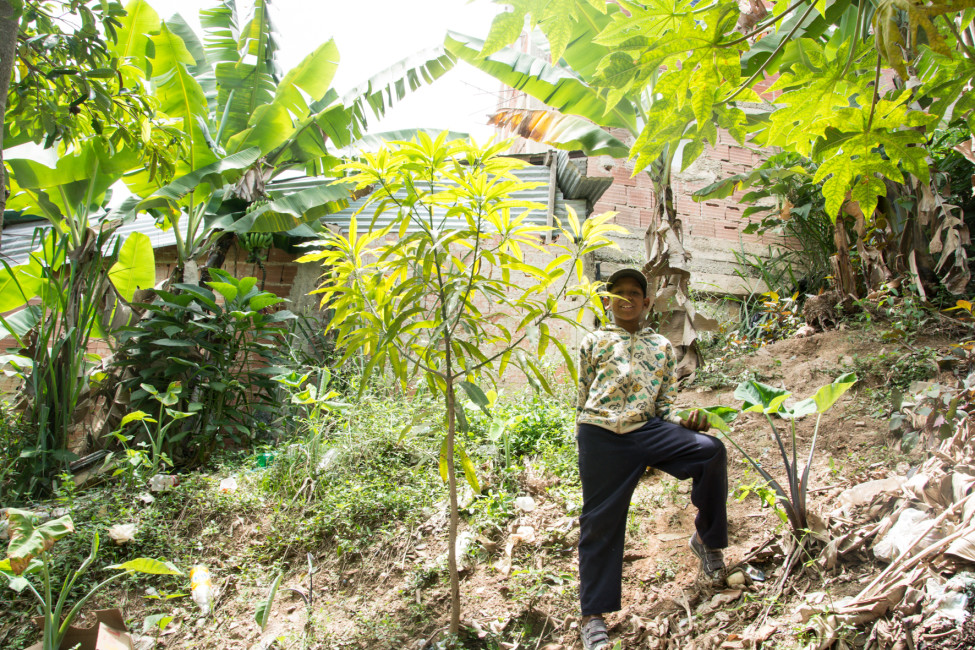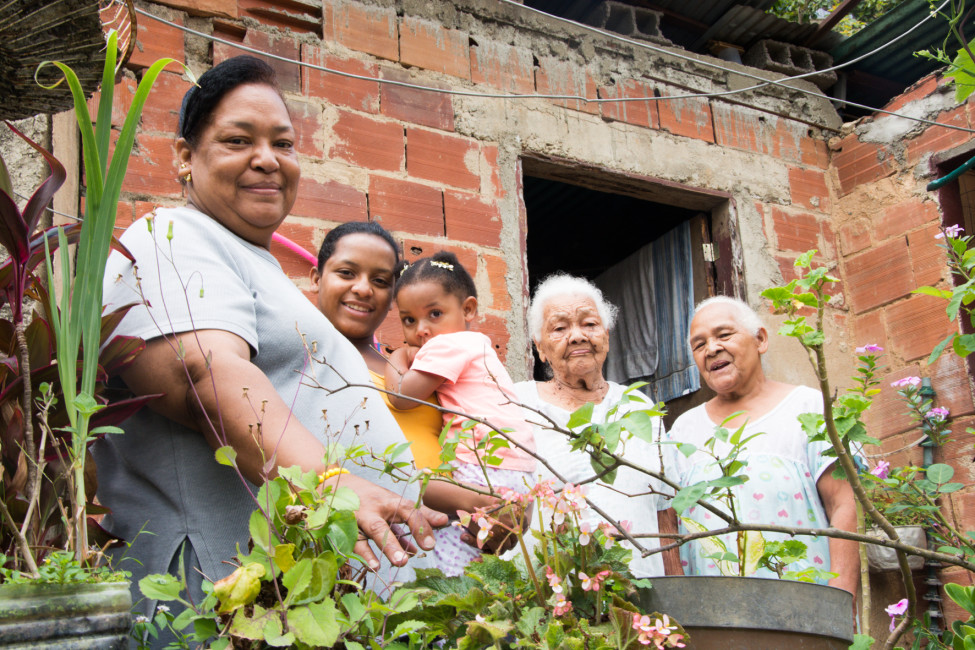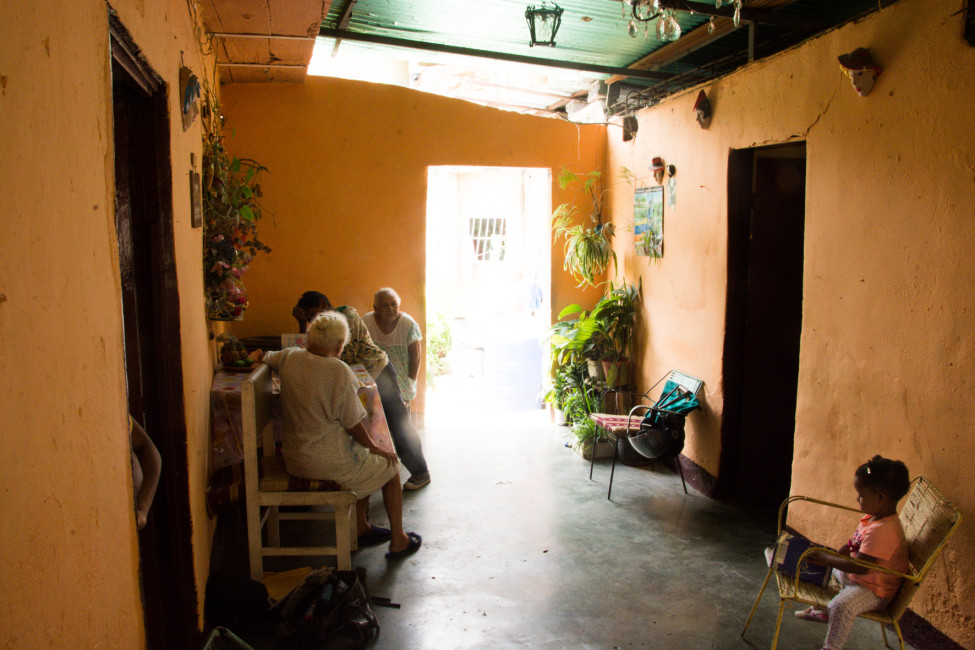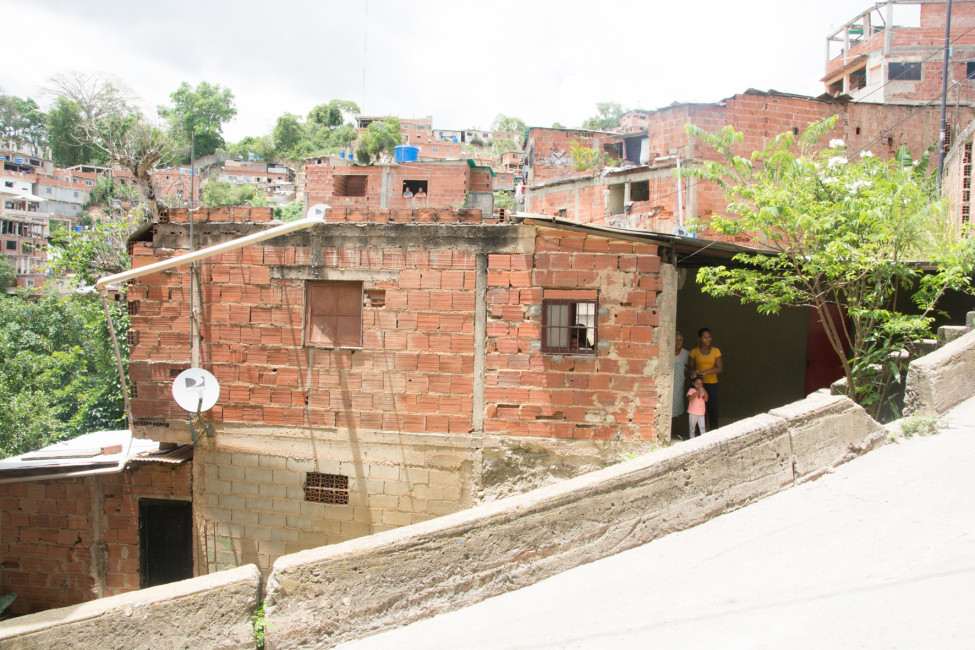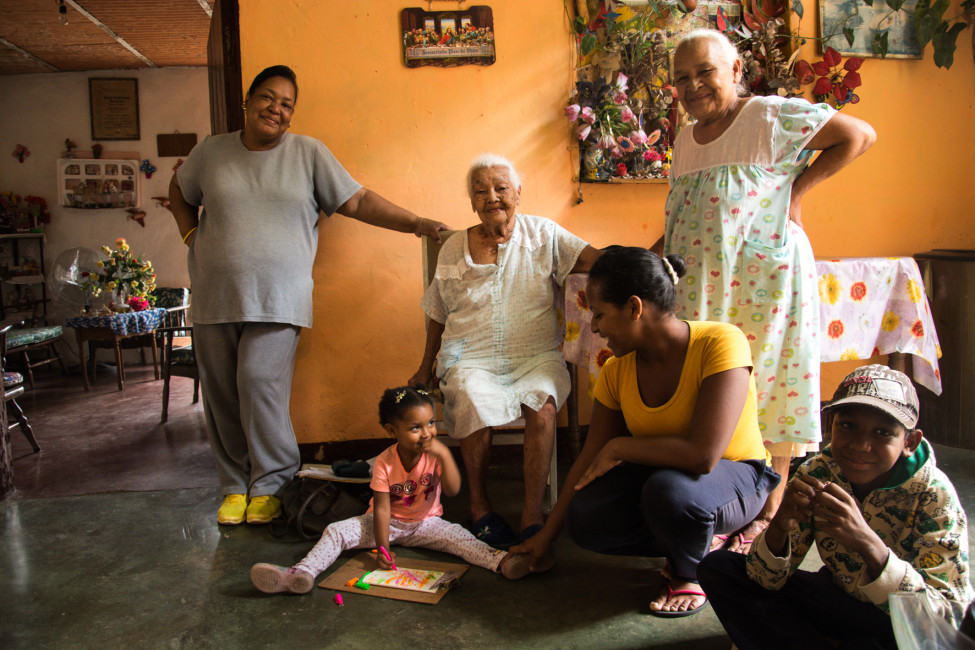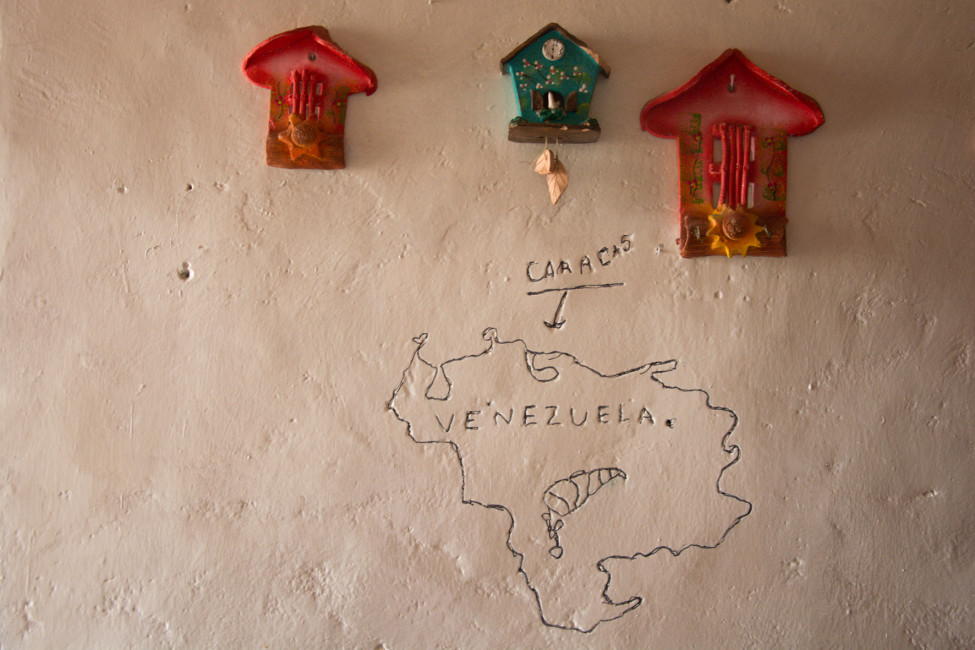| Julia and Bonifacio’s House Five generations of women live in Ms. Julia’s house. Ms. Julia is already 99 years old, her daughter Simona is 69, her granddaughter Gladys is reaching her 50s, her great-granddaughter Deva is 13 and finally her great-great-granddaughter Hilary is 3 years old. There are now four women who have grown up to the working example of Ms. Julia. In 1954, Bonifacio and Julia moved from El Valle in the west of Caracas to Petare in the east end. They went from living with their families to living independently, after all, they already had three children. They decided to buy a land of 250 square meters on top of a hill in South Petare. Ms. Julia recalls that by selling raffle tickets she gradually saved enough money to buy the land and construct the first part of the house. She tells us: “This land was filled with cattle, it was a large meadow. I bought it from a man who had seized it to sell. I was often asked, ‘Why do you live so high up? – Well, I would tell them that I live quietly. I do not disturb anyone and I can ignore anyone who tries to disturb me.” Julia worked part-time in Social Security and part-time in her house. She spent three days digging up the ground until she was able to consolidate a flat area to settle their first wooden house. That plain that was initially the house is now the kitchen and the entrance hall. With time, they expanded the house to make room for their children, grandchildren and today even their great-great-granddaughter. On their land there are now three additional houses connected by stairs and terraces full of plants where the rest of the family lives. Simona, one of Ms. Julia’s six children, remembers being 10 years old when they moved to the house. She would take the bus from Mesuca to Boleíta to go to school. If they wanted to go to downtown Petare, they would walk. Her mother would carry water from Mariches to the house, because there was no water access at home. Today they have electricity, but water is still a problem. Bonifacio worked in the mayor’s office and he was able to help finish the asphalting of the road. Slowly, they sold bits of the land and the cattle. After a few years, the meadow was replaced by a neighborhood full of houses. In 1975 they started building the blockhouse. A hardware store opened nearby, so it became easier to buy the materials to make pipes and improve the conditions of the house. At that time there were still empty spaces between the houses. Ms. Julia longs for how Petare use to be, “Before people were more friendly, everyone knew one another. They asked, ‘How are you doing? Is everything well?’. Now it’s different, there are fewer green areas as they have been occupied by new housing and residents have changed too. Now a days what they enjoy most of this house is that its always full of people; they meet in the corridor, which is the same from the initial house. It has always been the favorite place for children to romp around. Recently it was roofed but it use to be in the outdoors. Chuchu and Deva, the great-grandchildren of Julia, played at the entrance and down in the “pen”. The pen is a ravine full of plants, where they grow at least ten different crops: plantain, papaya, passion fruit, cocoa, yam, to name a few. They also have two chickens and newly born chicks. We asked, “What part of your house would take if you were to move?” to which she replied the memories. She continued explaining “I put so much work in, sometimes I was so rushed I would leave the house without even combing my hair”. She keeps all the receipts of the household expenses, and dreams of having the registered title of ownership to leave to her children. Link: http://iqlatino.org/2015/cinco-generaciones-mujeres-casa/ |
